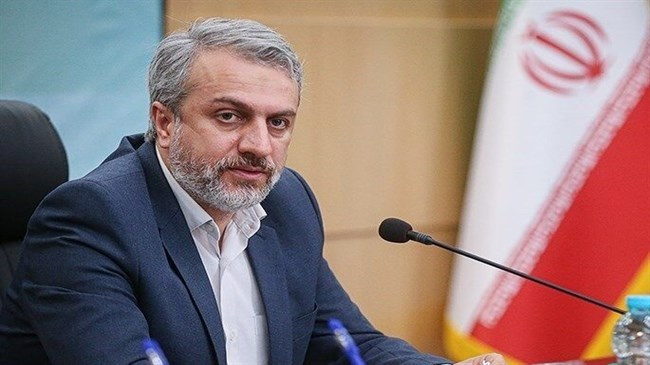Minister: INSTC, priority of Iran-Armenia ties

“One of the four main routes of the INSTC passes through Armenia,” Fatemi-Amin said during his official visit to Armenia, reported Fars News Agency. “The transport connectivity between Iran and Armenia should be implemented to this end.”
Iran has already announced its readiness to cooperate with Armenia in the construction of a new transportation route (Kajaran-Sisian road).
The 64-kilometer-long route is part of Iran-Armenia-Georgia Transportation Corridor which comes as part of Iran’s bid to launch the North-South Transport Corridor.
The INSTC is a 7,200-kilometer-long multi-mode network of ship, rail, and road route for moving freight between Iran, India, Afghanistan, Azerbaijan, Russia, Armenia, Central Asia and Europe.
It is aimed at boosting trade both within the region and beyond.
The minister also said Tehran is ready to launch a joint venture with Yerevan to manufacture automobiles in Armenia.
“The Iran Khodro Company’s (IKCO) plant manufactures 10 cars a day in Azerbaijan. We can also have a joint venture to produce cars in Armenia.”
In a meeting with the Armenian Minister of Economy Vahan Kerobyan, Fatemi-Amin touched on the economic capacities of Iran and Armenia, describing the economies of the two neighboring countries as “complementary”.
He also called for boosting trade ties between Tehran and Yerevan via both trade exchange and joint ventures.
Fatemi-Amin traveled to Yerevan on Thursday, heading a high-ranking delegation, including trade officials and CEOs of private companies.
This is the first visit to Armenia at this level by high-ranking Iranian officials since President Seyyed Ebrahim Raeisi took office in August 2021.
Fatemi-Amin said his visit to Armenia is aimed at expanding bilateral trade ties via joint investments.
“This visit is focused on deepening ties between Iran and Armenia via joint ventures," he said upon arrival in Yerevan on Thursday.
The annual trade between the two neighbors, currently around $300 million, has steadily grown since Iran and the Eurasian Economic Union (EAEU) reached a free trade agreement in October 2018, according to which about 862 commodity items were subjected to preferential tariffs.
The EAEU is a trade bloc that includes Russia, Armenia, Belarus, Kazakhstan and Kyrgyzstan, seen by many observers as a precursor to a future Eurasian Union to unite the regional states as a bulwark against the West's use of economic sanctions as a political pressure tool.
The Armenian market provides a special opportunity for small- and medium-sized Iranian enterprises, especially in the field of food, home appliances and nuts.
Given geographical location and limitations of the country, Armenian industry is in need of cooperation with Iran. This means the two countries offer each other unique opportunities for cooperation, which need to be seized in a timely manner to achieve result.
For cooperation, it is necessary to create conditions for the presence of Iranian companies – especially small and medium enterprises that can compete in the Armenian market – in order to gain access to other markets while building a permanent trade foothold in the country.
The visit by the minister of industry, mine and trade, having already visited Oman, Qatar and the UAE, took place in line with the administration's determination to develop economic and trade diplomacy with the regional countries, especially Iran's neighbors.
It was also in line with the state policy to provide the necessary basis for the proactive presence of the Iranian private sector in neighboring countries and build a competitive landscape for their international operations.
Last September, Raeisi met with Armenian Prime Minister Nikol Pashinyan in Tajikistan's capital Dushanbe where Iran was accepted as the new member of the Eurasian political, economic, and security alliance.
In their meeting, they stressed the need for increasing the current level of economic relations between the two neighbors.
Source: Iran Daily

